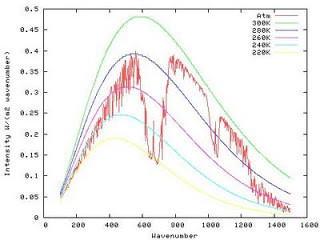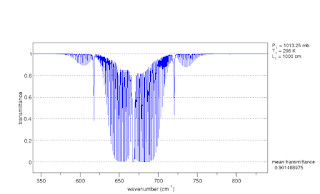
Eli Explains It All: No Atmospheric CO2 Is Not Saturated
November 17, 2018One of the evergreens, besides the one that more CO2 is needed to grow more lettuce, is that the effect of CO2 in the atmosphere is saturated.
Part of the TL:DR to this is actually interesting and in the optional reading below, but the short of it is that the role CO2 plays in the atmosphere is to radiate a considerable amount of energy to space. This is needed to balance the energy coming in from the sun.
In the atmosphere the higher you go the colder it gets till you hit the tropopause.
The amount of energy that can be radiated to space by CO2 depends on the fourth power of the temperature at the level it is radiated to space from
The effective level the CO2 can radiate to space from rises linearly with the increase in concentration.
Until the effective radiative level is above the tropopause, adding more CO2 slows the emission to space and thus the surface has to warm in response.
Eli has written on this before. If you look at the emission spectrum from way up high the sharp spike in the middle of the CO2 band is where the concentration is so high that radiation cannot be emitted to space except high up in the stratosphere.
Everywhere else in the CO2 band emission is occurring in the troposphere (you can tell by looking at the temperatures, and you can tell by looking at the emission) and adding CO2 will decrease the amount of emission in the CO2 band.
Now the interesting stuff. The optical density in the CO2 band below the effective radiative altitude is so high that any emission in that region is absorbed, at the surface in the first kilometer, on line center in the first 10 m. The temperature in the first 10 m is essentially that at the surface. That means emission from collisionally excited CO2 will be strong, with roughly half going back to the ground. Increase CO2 and the backradiation will increase proportionally because there is more CO2.
That means by definition that much of the greenhouse gas effect on surface temperature is local to a few meters above the surface.
Worse, the stronger low lying backradiation slows down convection although it will speed up evaporation.
This is actually all buried in the computer code outputs from radiation transfer models, less so from gcms which don't slice and dice the layers so finely, but it is something to think about



